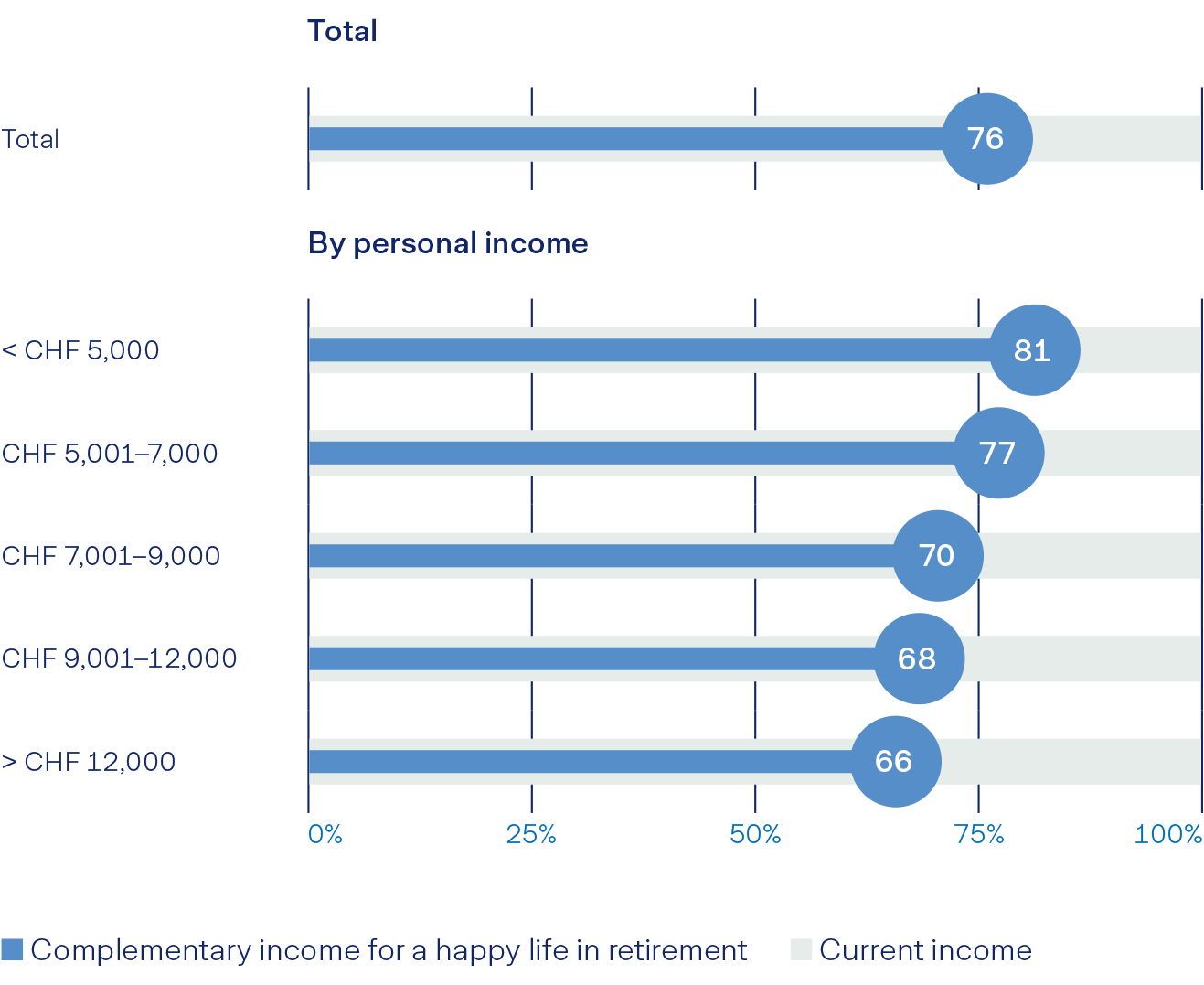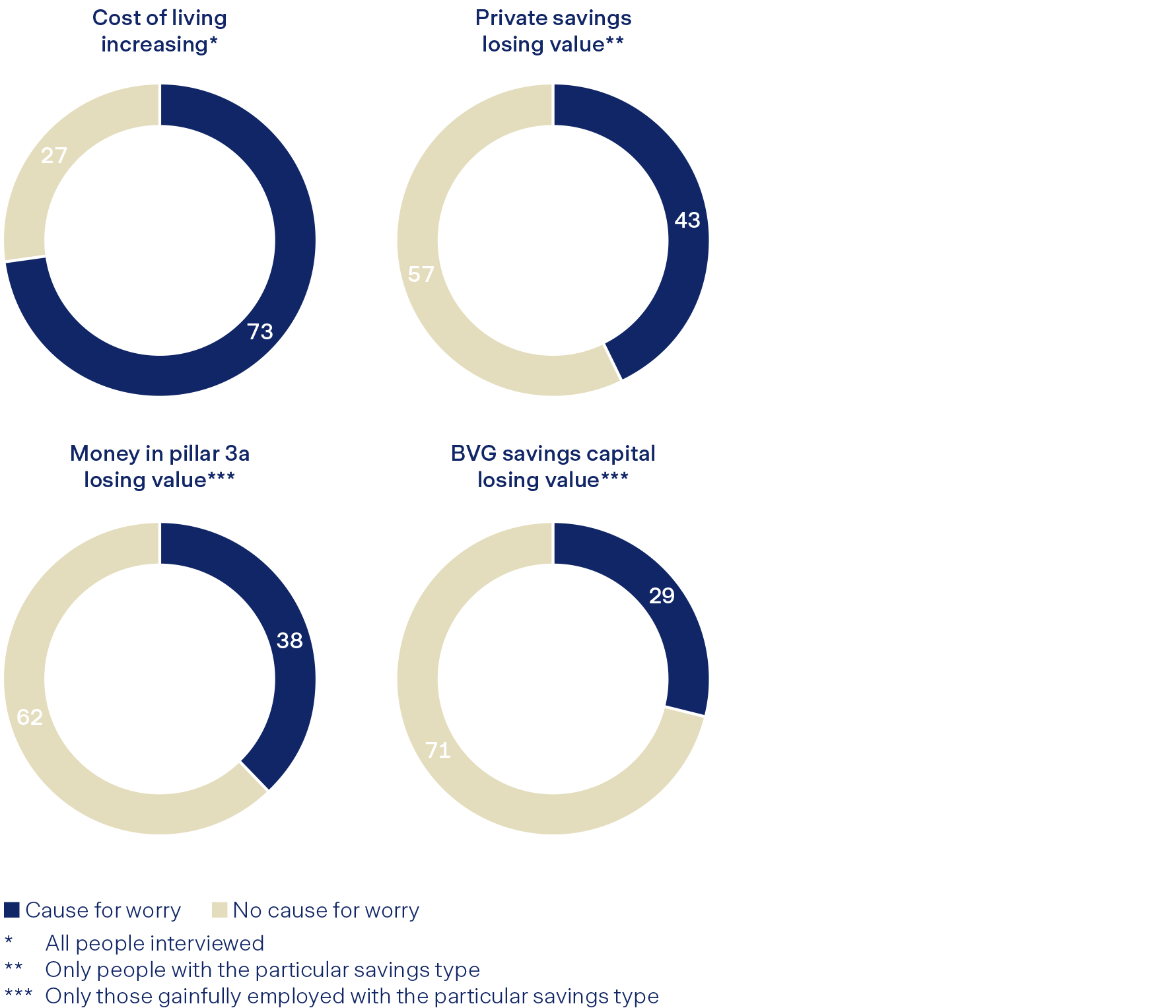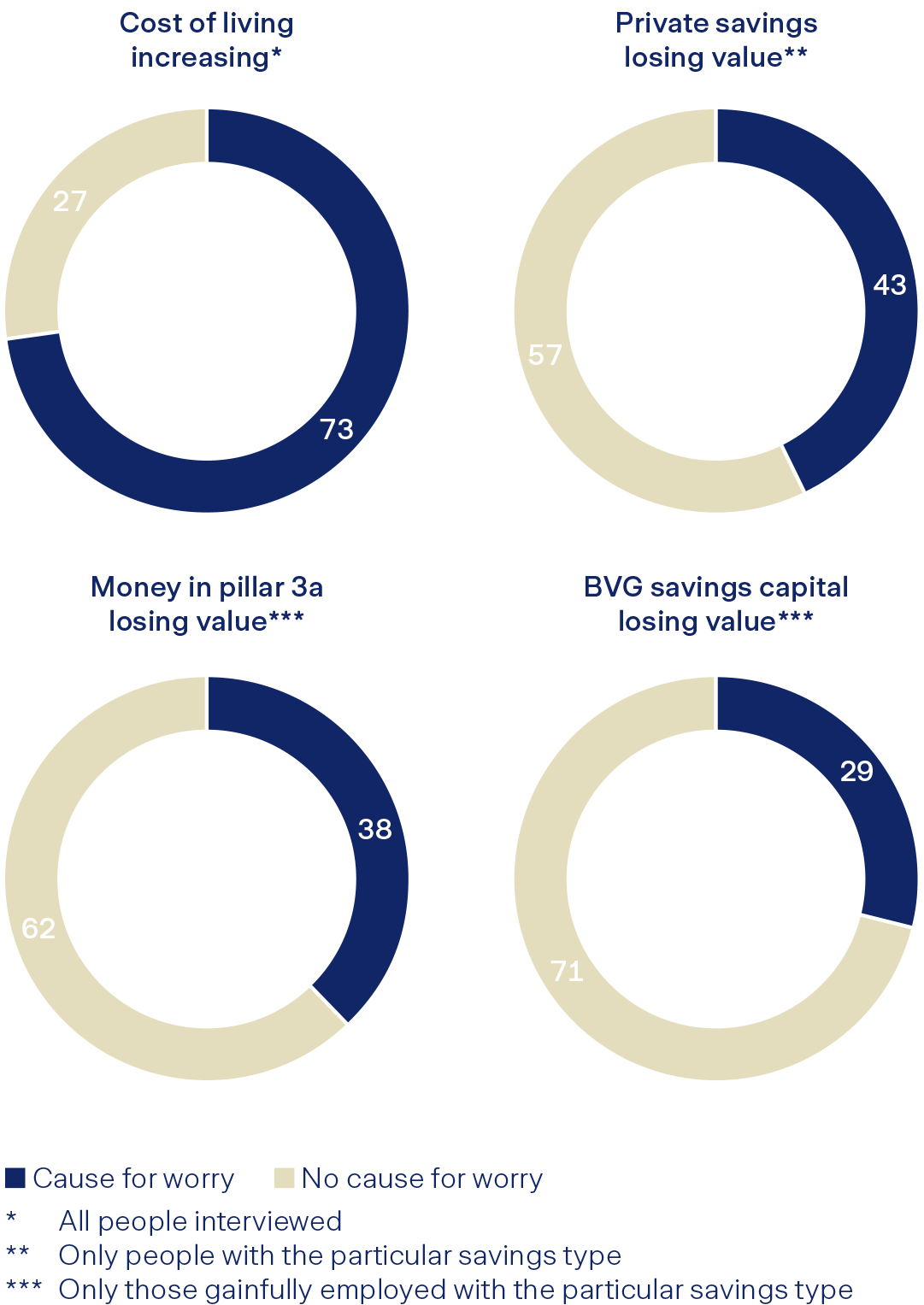Since 2021, the "Fairplay in occupational retirement provision" (German Version) study series has investigated the knowledge and attitudes of the population with respect to the second pillar. On behalf of the Zurich Insurance Company Ltd, research institute Sotomo has conducted a representative survey for the third time: more than 1,800 people between the ages of 18 and 79 were surveyed in January 2023 – with fascinating results:
The gap between dreams and reality
According to the survey, on average people in Switzerland need 76% of their current income after retirement in order "to be completely satisfied". However, state and occupational retirement provision, or the first and second pillars, are not sufficient for this: the objective defined by the Confederation is for the two pillars together to provide around 60% of the last gross income after retirement. Depending on the individual situation though, the value may be lower, for example just 50%. Factors such as the period of low interest rates over previous years, inflation, and redistribution can result in a scenario whereby the longer a person saves, the less likely they are to reach the 60% target with pillars 1 and 2.
In other words, for many people there is a growing gulf between dreams and reality. For instance, respondents with an income of CHF 6,000 per month would wish for a pension of CHF 4,600 on average. Yet the targeted 60% from the first and second pillar only amounts to CHF 3,600 – resulting in a gap of CHF 1,000 per month. Such gaps can only be closed if individuals in gainful employment consistently save for their old age in the voluntary third pillar, and so build up a third component to ensure their financial security. Raising awareness of this is tremendously important – to enable people in Switzerland to set the right course for their financial future.
Complementary rate

The consequences of inflation on retirement provision are only understood with financial knowledge
The latest Fairplay study also shows that only a section of the population has the knowledge required to understand how the second pillar works, and also the consequences of current inflation for retirement provision. At 2.8%, annual inflation in Switzerland in 2022 was at a level last seen in the 1990s. This not only has an impact when shopping; savings accounts also lose value relatively. But the population is hardly aware of this: people are much more often concerned about the rise in the cost of living (73%) than about the devaluation of their savings (43%). The fact that the capital forming their occupational retirement provision is likewise devalued in the event of inflation worries just 29% of active insured persons. There are clear gender-specific differences here: women are even less aware than men that inflation also impacts retirement provision and that traditional savings in an account are affected by inflation. Accordingly, they alter their investment behavior less often to take account of inflation.
Reasons for concern due to inflation
One of the reasons for this is that men consider their financial knowledge to be much better than women. A lack of knowledge is one of the main reasons why someone might not invest his – or her – savings in equities or bonds. Small-scale savers with few assets and little financial knowledge are not very aware of the devaluation of their savings. Yet they are often more heavily affected as their financial leeway is smaller. If their savings fall in value, they get into financial difficulties more quickly than wealthy individuals, who also have more opportunities to profitably invest their money.
Why are some people better acquainted with the topic of finances than others? According to the Fairplay study, elderly people in particular base their financial knowledge on their own personal experiences. Young adults, by contrast, develop their financial expertise thanks to role models from among their family and acquaintances – around half cite them as a source. On the other hand, just under a third of young adults were provided with financial knowledge through school and education. This means it is more or less a matter of luck whether you grow up in an environment with financial expertise or not – according to the survey, such content is not systematically taught. In line with this, the vast majority of those surveyed – 87% – would welcome it if knowledge of retirement provision and investments were to be taught as a school subject.
For a relaxed retirement with sufficient income, taking your financial future personally in hand as far as possible is essential. This applies to people with a low income in particular. But many people are still not sufficiently aware of this. Accordingly, anyone who wants to set the correct course for retirement must develop their own retirement provision expertise – or seek competent advice.






